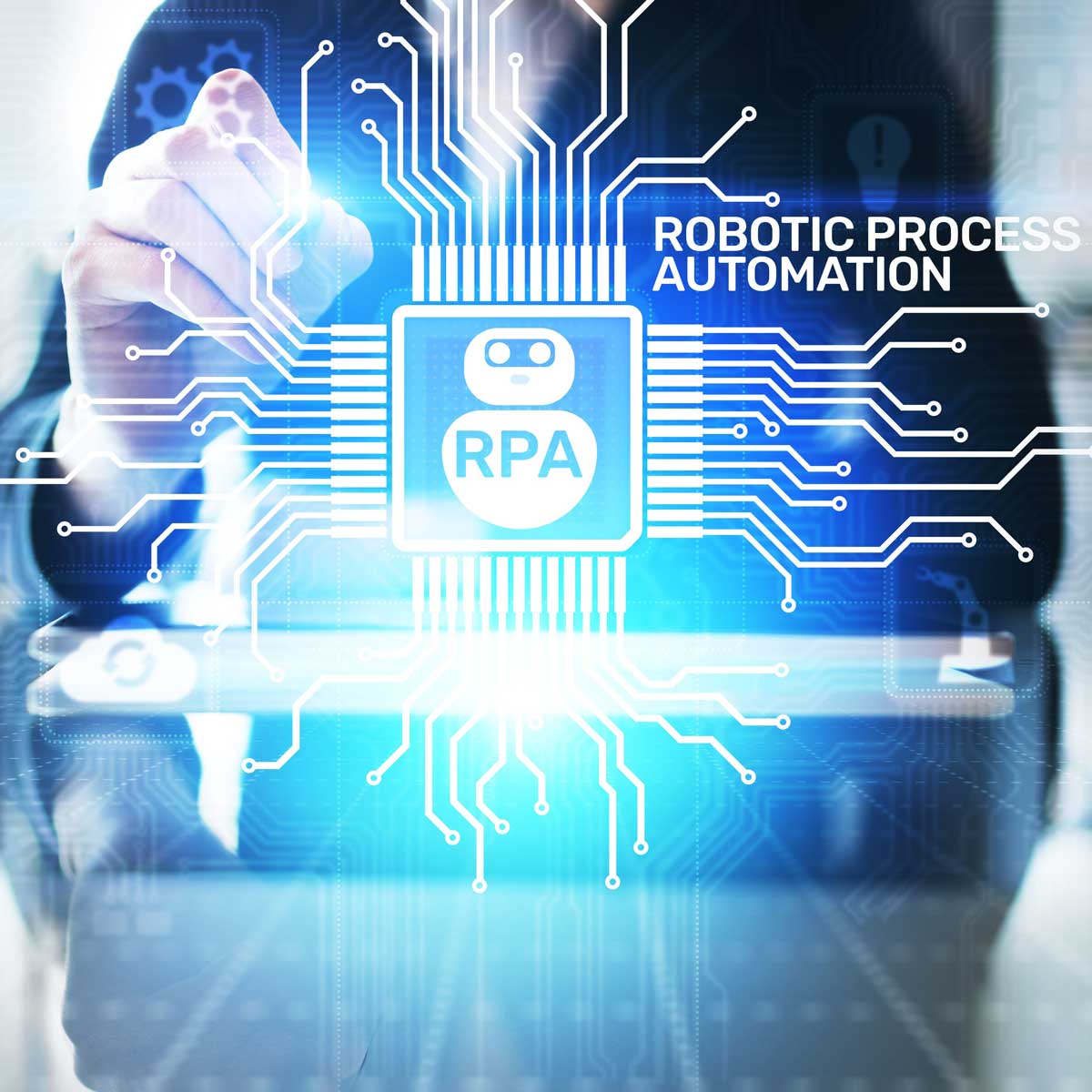This website uses cookies so that we can provide you with the best user experience possible. Cookie information is stored in your browser and performs functions such as recognising you when you return to our website and helping our team to understand which sections of the website you find most interesting and useful.
Automating Back-Office Responsibilities in the Manufacturing Industry

When people who work in manufacturing and distribution hear the word “robot,” they are likely to imagine a machine that performs physical labor, such as assembly and packaging work or building machine parts. However, with Robotic Process Automation, or RPA, the emphasis is on process automation.
RPA is a software tool that is designed to automate computerized processes.
It is particularly effective when a repetitive task also involves high volumes. Think of it as a robot that lives inside your computer system and can perform anything from rote repetitive tasks (like running a standard set of month-end reports) to functions that involve machine learning and artificial intelligence (such as sorting through inbound emails and routing to the right person).
How Virtual Workers Help Manufacturers Grow
Imagine yourself placing a phone call and immediately hearing an automated message telling you to press “1” for the first option and “2” for the second. You press “2,” which then sends you to that second option, just as you requested when you hit the number on your phone. That’s a very familiar and early version of RPA. At its core, it is that simple.
Technology has come a long way since the first telephone automation system. Today’s RPA vendors are now positioning the software, or these bots, as an accessible “virtual workforce” for hire. This workforce is made up of virtual workers, who are your resources, paid for via a subscription, and can be programmed to work on multiple repeatable tasks around the clock 365 days a year.
The idea here is to take mundane or “low-value-add” manual tasks and automate them. Through automation, you can eliminate manual “swivel chair work,” reduce errors, and potentially streamline or even speed up tasks; thereby freeing up humans to do tasks that require the skills real people are good at. Ultimately, a virtual worker can learn to do a task, and then carry it out the same way repeatedly and without pause. RPA is a manufacturer’s “do more with less” saving grace.
Granted, RPA cannot be successful when processes aren’t first put into place, or if the RPA is used to automate processes that are not initially optimized to begin with. RPA in the most simple form can mimic keystrokes on a computer. However, it cannot make decisions, think for itself, or pick up on skills without first being taught.
That is, of course, where the Machine Learning (ML) and Artificial Intelligence (AI) technologies can kick in. The digital worker can then use these tools to learn, recognize patterns, and actually improve performance.
Costs of RPA – How Much Does Implementing Robotic Process Automation Cost?
Another common misconception of implementing RPA in a manufacturing facility, supply chain, or distribution center is that it is prohibitively expensive. It is estimated that up to 45 percent of the activities companies pay people to perform can be automated through RPA. Technologies such as RPA, AI, and ML are significantly more accessible than in the past. They are available on subscription and utilize the power of cloud computing. That said, it’s comparatively affordable to purchase a single digital worker and put them to work.
Additionally, Research & Development (R&D) government tax incentives offer financial resources to manufacturing companies that choose to employ automation in their factories. Often, companies that implement a new automated process or improve efficiencies through AI technology will receive tax credits that cover a considerable amount of their costs.
RPA and Your Labor Force
Ask your workers what they’d like to do less of in their day-to-day, and typically, you’ll learn that they’d rather not do the mundane back-office work and reporting. By adopting RPA, you’re asking your employees to focus on big picture, mission-focused work. The implementation of RPA also provides your staff with an opportunity to learn more about technology and train the virtual workers to manage the back-office tasks your people are shedding.
RPA in the Workplace
RPA offers new capabilities and transformative advancements for industry leaders in manufacturing. Automation can be a competitive differentiator—and those companies that do not adopt it risk eventually falling behind. Explore your RPA options with us and contact a manufacturing expert today. Or read more about what other like-minded leaders are doing about their automation in Sikich’s 2019 M&D Report.
Watch Here
This publication contains general information only and Sikich is not, by means of this publication, rendering accounting, business, financial, investment, legal, tax, or any other professional advice or services. This publication is not a substitute for such professional advice or services, nor should you use it as a basis for any decision, action or omission that may affect you or your business. Before making any decision, taking any action or omitting an action that may affect you or your business, you should consult a qualified professional advisor. In addition, this publication may contain certain content generated by an artificial intelligence (AI) language model. You acknowledge that Sikich shall not be responsible for any loss sustained by you or any person who relies on this publication.




